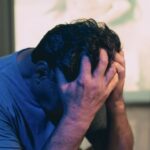
What to expect when starting your dog on a CBD oil regimen?
As CBD oil becomes a popular wellness supplement for humans, caring pet owners consider its promising impact for dogs too. Early veterinary research reveals encouraging support of cannabidiol (CBD) for joint mobility, anxiety behaviors, seizures, and more in canine patients. As the frenzied CBD market grows increasingly saturated with options, reputable companies committed to purity and potency get lost amidst bait-and-switch scams. That’s why pet owners must educate themselves on identifying respectable CBD oils for dogs formulated responsibly for pet health needs.
- Organic-grown hemp sourcing
- Clean carbon dioxide extraction method
- Full panel lab testing with recent reports
- THC-free formulations
- Dosing guidelines specific for pets
Veterinarians also advise selecting naturally flavored tinctures over treat products when starting CBD to allow easy observation and tweaking of precise serving sizes as needed.
Realistic timeframes for recognizing effects
While some dogs experience quick results, pet owners must practice patience allowing CBD effects to compound. It generally takes consistent daily administration for 2-4 weeks before observations of calmer disposition, improved mobility, and less shaking signal the best cbd oil for dogs actively supporting wellness. Should no change occur after a month, consult your vet on adjusting amounts incrementally per your dog’s weight. Finding the optimal dose helps maximize therapeutic benefits.
Administering CBD oil properly
CBD bioavailability and metabolism vary greatly between species. Responsible companies provide specific dosing guidelines personalized to your pup’s weight. While effects manifest faster on an empty stomach, mixing oil into wet food prevents picky eaters from rejecting its earthy taste. Acclimate anxious dogs to the dropper slowly to prevent associating CBD with fear. Stick closely to your vet’s serving recommendations as you monitor your dog’s experience over several weeks before considering the amount changes.
Unlike consuming cannabis directly, hemp-derived CBD products elicit no psychotropic effects or overdose risk. However, introduce supplementation gradually should your dog display lethargy or digestive upset as rare side effects. Seek immediate veterinary guidance for vomiting, diarrhea, or loss of appetite lasting beyond 24 hours of starting CBD. Generally, dosage tweaks quickly resolve mild reactions, but best practice involves vigilantly noting any product responses warranting a vet exam.
Early signs of success
Once optimal doses are calibrated, look for sustained upticks in disposition like renewed interest in playing, improved sleep quality, increased alertness on walks, and less visible shaking/pacing from anxiety. For arthritic or injured dogs specifically, monitor for willingness to handle stairs, enthusiasm in greeting family at the door, and ability to comfortably rise into vehicles. Keep an observational journal tracking progress over the first 90 days. Share promising developments alongside questions with your veterinarian to illuminate CBD’s therapeutic mechanisms helping your pup.
Budgeting considerations
While therapeutic benefits make consistent CBD administration worthwhile long-term, quality oil does require an ongoing financial investment averaging $50-75+ monthly for medium-sized dogs. Improved vitality and reduced pain likely decrease other medication and vet visit costs over time. Discuss pairing CBD with prescription drugs like glucosamine as vet-authorized lower doses may fulfill efficacy with CBD’s support. Pet owners willing to exercise patience and administer CBD properly stand to enrich their dog’s longevity and quality of life tremendously.
















